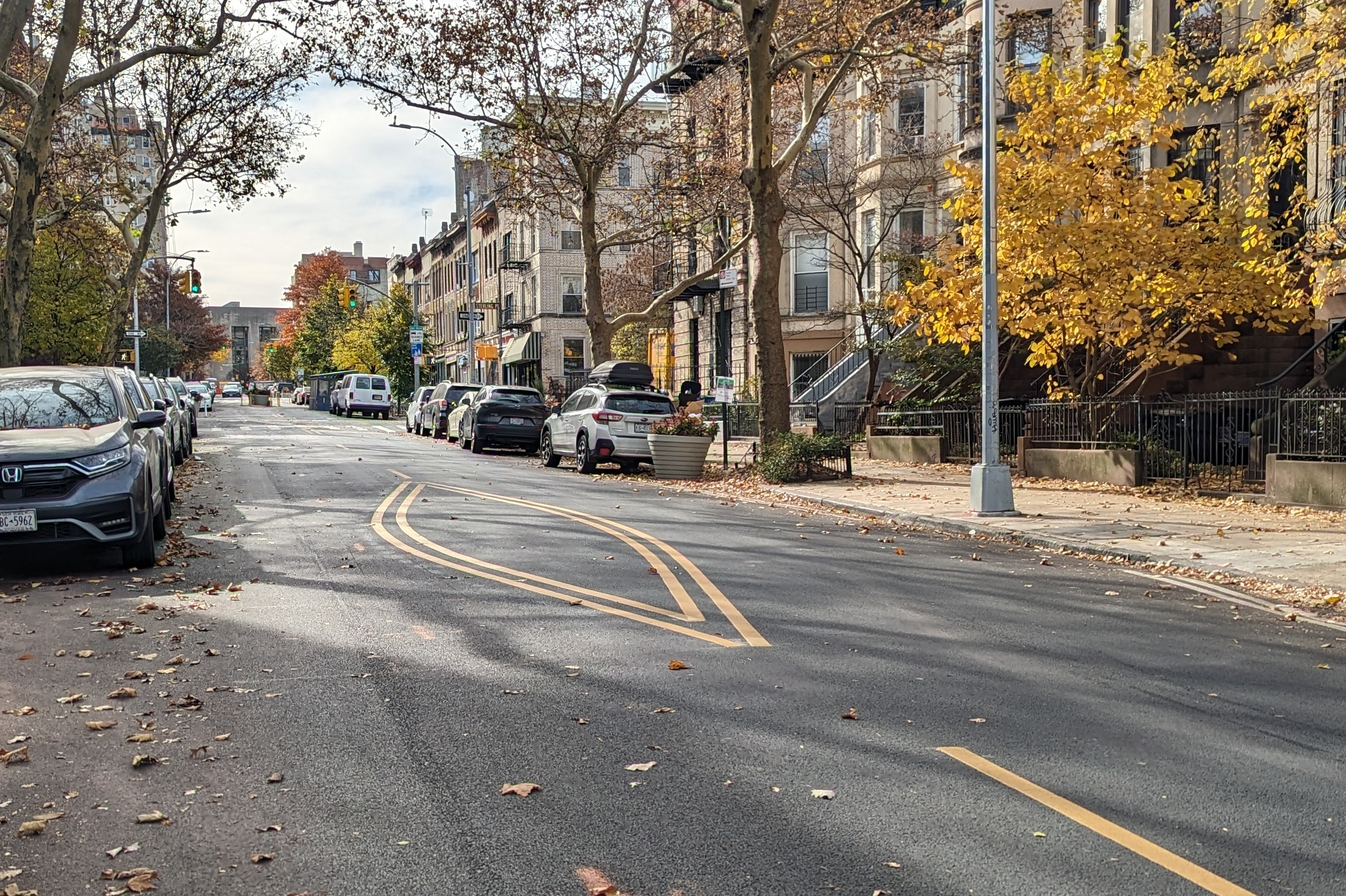PHNDC, having set a national example in public space revisioning, urges Adams to support progressive public space projects
BROOKLYN — Fighting continued interference from City Hall in public space revisioning and street safety projects in Prospect Heights, the Prospect Heights Neighborhood Development Council has submitted a FOIL request to City Hall to obtain the results of the most recent Underhill Avenue redesign survey. City Hall has yet to release any survey outcomes following a written request from PHNDC earlier this month. The City’s actions in this instance are emblematic of how PHNDC’s public space initiatives — which set a national example for how communities can reclaim streets for people and have been praised in the New York Times and Curbed among other outlets — are facing an increasing number of hurdles under the Adams administration.
“The City should be encouraging these initiatives and highlighting the benefits to the public — not delaying their fruition behind the scenes” said Gib Veconi, Chair of the Prospect Heights Neighborhood Development Council. “We provide valuable public services in the form of safer streets, additional public open space, free programming and economic development for local businesses. Yet the administration provides little support for our work, and in the case of Underhill Avenue, is actively undermining it to satisfy what has shown to be a minority of residents who oppose increasing pedestrian access. Worst of all, by delaying action on the Underhill Avenue Bike Boulevard, the Mayor is fueling an increasingly acrimonious and toxic environment in Prospect Heights he should instead be de-escalating through leadership.”
In addition to supporting the redesign of Underhill Avenue, PHNDC operates the Vanderbilt Avenue Open Street, which is one of the largest remaining “full closure” Open Streets in the City. Despite Mayor Adams’ stated support for Open Streets and the administration’s own admission of the economic benefits of these programs, Open Streets have dramatically shrunk over the past several years. The New York Times has estimated that New York lost over 63 miles of public open space between 2020 and 2023 as a result of discontinued Open Streets.
“Based on what this administration has said about the benefits of Open Streets, you would expect additional funding and support for these and other similar initiatives. Instead, we have seen the opposite,” added Veconi.
In previous years, Open Streets received funding earmarked from the American Recovery Plan Act through City grants. Since this funding has run out, neither the City, nor any other municipal agency, has intervened to supplement the support, placing an increased financial burden on organizers.
PHNDC is currently in the process of planning its Open Street season for 2024, likely to begin sometime this Spring. There have been countless studies assessing the benefits of these programs, including DOT’s own Streets for Recovery report, which focuses on economic benefits. Other benefits include:
- Free programming facilitated by PHNDC on both Underhill and Vanderbilt Avenues, providing a variety of enrichment activities to residents at no cost.
- Improved safety for all street users — pedestrians, cyclists and drivers.
- Increased community connectivity and engagement.
Support for public space initiatives
Outreach over several years has shown strong local support for Open Streets in Prospect Heights and the Underhill Bike Boulevard:
- The Prospect Heights Streets for People petition, launched in September 2023, has over 3,000 signatures to date. An analysis by BetaNYC of the first 3,000 petition signers found that:
- 54% live in Brooklyn Community District 8 (Prospect Heights and Crown Heights North).
- 65% live in City Council District 35 (represented by Council Member Crystal Hudson).
- Over 70% live in Prospect Heights and the surrounding neighborhoods of Park Slope, Boerum Hill, Fort Greene, Clinton Hill and Crown Heights.
- 92% live in Brooklyn, and 99% live in New York City.
- DOT’s own surveys found 86% of residents support permanent changes to make Prospect Heights Open Streets pedestrian and/or cycling priority corridors and only 10% of survey respondents want to drive on the street.
- Census data show that less than a third of Prospect Heights households have access to a vehicle, and only 8% of workers commute by car.
Resources
- Backgrounder: Underhill Avenue redesign
- Prospect Heights public space initiatives FAQs
- About – Prospect Heights Places
- What is a bike boulevard?
Related coverage
- January 18, 2024: “Prospect Heights residents call on mayor to finish Underhill Avenue’s bike boulevard • Brooklyn Paper”
- Curbed, December 12, 2023: “Making Headway on the Perfect New York Street”
- StreetsblogNYC, November 14, 2023: “Vision? Zero: Prospect Heights Seeks Daylighting for a Neighborhood with None – Streetsblog New York City”
- amNewYork, November 3, 2023: “Officials call for focus on street safety after two-car hit-and-run claims life of senior woman in Brooklyn | amNewYork”
- New York Daily News, October 26, 2023: “NYC Mayor Adams’ demand for more community input on Prospect Heights bike path leaves residents seething”
- StreetsblogNYC, October 19, 2023: “Prospect Heights Group to Mayor Adams: Finish the Underhill Ave. Bike Boulevard! – Streetsblog New York City”
- Gothamist, October 18, 2023: “Advocates worry which street safety project Mayor Adams will abandon next – Gothamist
- Patch, September 27, 2023: Mayor Adams, Don’t Turn Your Back On BK’s Bike Boulevard: Advocates | Brooklyn, NY Patch
- News12, September 25, 2023: Petition picks up steam to create public space in Prospect Heights
